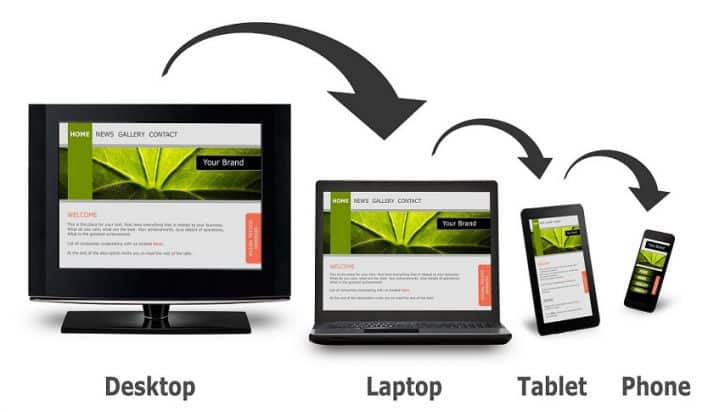Security on websites is of the utmost importance in this day and age. In light of the fact that cyber attacks are growing more complex, it is absolutely necessary to guarantee the safety and integrity of your website in order to safeguard your company, its data, and its site visitors. This exhaustive checklist provides an outline of the important steps that you need to perform in order to significantly improve the security of your website and protect it from any potential threats. The Ultimate Checklist for Website Security

Understanding Website Security: Why It Matters
It is necessary to have a solid understanding of the reasons behind the significance of website security before beginning the checklist. Not only can a secure website safeguard the reputation of your company, but it also instills trust and confidence in the people who choose to use it. It is possible for cyberattacks to result in data breaches, financial losses, and damage to the credibility of your brand when they occur. You are able to reduce the likelihood of these dangers occurring and provide your visitors with a safe and secure online environment if you make website security a top priority.
Types of Cyber Threats to Be Aware Of
Malware refers to malicious software that is meant to steal sensitive information or attack websites in order to cause damage or infection.
Phishing attacks are deceptive methods that are used to obtain personal or financial information from people by tricking them into divulging it.
Distributed denial of service attacks include flooding a website with traffic in order to interrupt its usual functioning.
SQL injection refers to the process of exploiting vulnerabilities in order to obtain unauthorized access to the database of a website.
To begin the process of developing a solid security strategy, the first step is to have an understanding of these prevalent cyber risks.
The Ultimate Website Security Checklist
It is recommended that you adhere to this exhaustive checklist in order to enhance the security of your website and safeguard it against any potential vulnerabilities.
1. Implement SSL/TLS Encryption
You should enable HTTPS in order to secure your website by utilizing SSL/TLS certificates to encrypt the data that is passed between the server and the browsers of users.
SSL/TLS Certificates Should Be Updated: For the highest possible level of security, it is essential to regularly renew and update your SSL/TLS certificates.
2. Keep Software and Plugins Up to Date
Ensure that all of the software on your website, including content management system (CMS) platforms, plugins, and themes, is updated on a regular basis in order to remedy any vulnerabilities.

Remove Unused Plugins: In order to limit the possibility for security threats, delete any plugins that are either unused or out of date.
3. Use Strong and Unique Passwords
When it comes to password best practices, it is recommended that users be encouraged to generate robust passwords that include a combination of letters, numbers, and special characters.
Introduce Two-Factor Authentication, often known as 2FA: Users should be required to authenticate their identity using a second mechanism, such as a mobile device, in order to add an additional layer of protection to the transaction.
4. Implement Web Application Firewall (WAF)
For protection against malicious traffic, you should make use of a web application firewall (WAF) to filter and prevent suspicious incoming traffic. This will protect your website from a variety of cyber dangers.
Routine Monitoring: It is important to monitor your WAF logs on a frequent basis in order to identify and swiftly handle any potential security incidents.
5. Backup Your Website Regularly
Automated Backups: In the event that your website or database is subjected to a cyberattack or suffers a loss of data, it is important to establish automated backups of both of these resources.
It is important to store backups in a safe location that is offsite in order to prevent the loss of data that could occur as a result of server failures or physical damage.

6. Limit User Access and Permissions
User Roles and Permissions: In order to restrict access to sensitive portions of your website, it is important to assign suitable user roles and permissions.
Checks and Balances: It is important to do regular audits of user accounts and permissions in order to locate and delete any accounts that are either unauthorized or dormant.
7. Monitor Website Activity and Security Alerts
Monitoring Tools for Security Make use of monitoring tools for website security in order to monitor and analyze website activity in order to identify any potentially dangerous or suspicious conduct.
Alert Notifications: You can set up real-time alerts for security problems, which will enable you to respond quickly and mitigate any possible hazards.
8. Educate Your Team and Users
Your team should be educated on the best practices for cybersecurity and the significance of keeping a secure online environment through the implementation of security awareness training.
Instructions for Users: Users should be provided with recommendations on how to set secure passwords, identify efforts at phishing, and report suspicious activity.
Conclusion
It is absolutely necessary to put in place stringent website security measures in order to protect your company, its data, and its consumers from potential cyberattacks. Through the implementation of this comprehensive checklist for website security, you will be able to establish a robust and resilient defense against potential vulnerabilities, so guaranteeing that everyone will have a safe and secure experience when using the internet. To protect your digital assets and to ensure that your online presence continues to inspire trust and confidence, you should make website security a top priority right now






